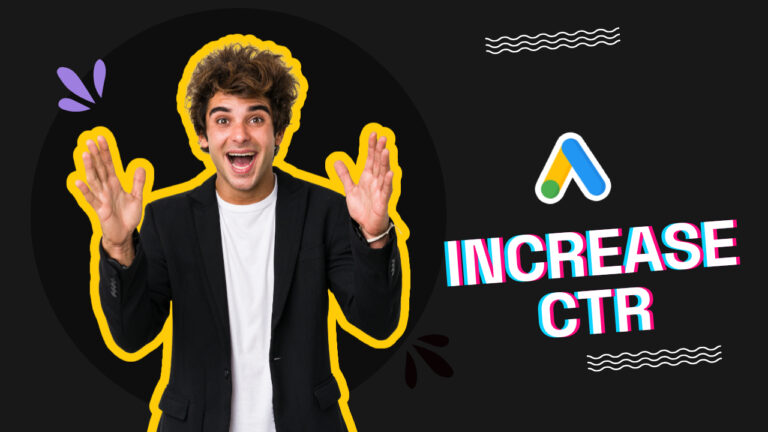Let’s start with a refresher, what is SEO?
Search engine optimisation, or SEO, is the process of improving the visibility and ranking of a website in search engine results pages (SERPs).
The question is why one would want to do SEO? The answer is visibility. Just ask yourself, how often do you go to the second page of Google search?
In this article, we will explore “the secrets of SEO” and discuss how to optimise your website for maximum visibility. We will cover the key factors that search engines use to determine a website’s ranking, the most effective SEO techniques and strategies, and how to track and measure the success of your SEO efforts.
Without further ado, let’s talk about some SEO.
According to Google, there are over 200 factors that contribute to ranking on Google search. However, there are some important ones that, if ignored, will certainly put you on page 10 of a Google search.
We are going to discuss those important ones that have the most impact on ranking.
Quality Content
Even though content enters much later in the process, however, for me, it comes at the top of the list, always.
Search engines, mainly Google, want their users to have the best experience and keep them coming. Users find quality content and answers to their search queries that is why we keep Googling everything.
Thus, one of the most important factors that search engines use to determine a website’s ranking is the quality and relevance of its content.
When a user enters a query into a search engine, the search engine uses its algorithms to crawl and index the billions of pages on the internet and return the most relevant and useful results to the user.
To improve your website’s ranking, it is essential to create high-quality, unique, and relevant content that is valuable and useful to your target audience.
If you don’t do this right and do everything else right, the chances of ranking go down a lot.
Keywords
Keywords are another “indicator” that the content of the page is related to the search query. It is also a significant factor in ranking. So knowing your keywords is the first thing you need to do when working on SEO.
Keywords are the words and phrases that are used by users to search for information on the internet.
To improve your website’s SEO, it is important to conduct thorough keyword research to identify the keywords and phrases that are relevant to your website and to incorporate those keywords into your website’s content, title and meta tags.
This will help search engines understand the content on your website and determine its relevancy to a user’s search query.
To do keyword research for SEO, you can start by thinking about the topics and ideas that are relevant to your business or website.
Once you have a list of potential keywords, you can use a variety of tools to help you determine which keywords are most popular and effective for your purposes.
Some popular tools for keyword research include Google Keyword Planner, SEMRush, and Ahrefs.
Structure & Organisation
Among other tasks you also need to focus on how you structure and organise your website content.
This is also part of the user experience. If a user gets lost when they visit your website then will never return to it. How you organise and structure depends on the business and purpose of the website.
Here are some common best practices that will help with SEO.
A well-designed navigation menu can help users easily find the content they are looking for and explore different sections of the website.
Organise your content into relevant categories and subcategories. By grouping related content together, you can make it easier for users to find what they are looking for and for search engines to understand the structure and hierarchy of your content.
URLs that include relevant keywords and accurately describe the content of a page can help search engines understand the content of the page and improve its ranking in search results. So try and add the keyword to your page URL.
Speaking of URLs, make sure you have a human-readable permalink (URL). Do not have page URL (www.website.co.nz/article123) instead have (www.website.co.nz/blog/how-to-do-seo).
Breadcrumb navigation can help users understand their current location within the website and easily navigate back to previous pages.
A search bar can be useful for websites with a large amount of content, as it allows users to quickly find the information they are looking for.
The best practices for website structure and organisation involve creating a user-friendly and intuitive design that makes it easy for users to find and access the content they are looking for.
On-page SEO
On-page SEO refers to the process of optimising individual web pages in order to rank higher and earn more relevant traffic in search engines.
This involves optimising the content and HTML source code of a page, as well as other factors like images and internal links.
Some common on-page SEO techniques include using keywords in the page title and body, optimising meta tags and descriptions, and using header tags to organise the content on the page.
By improving the on-page SEO of a website, you can increase your chances of ranking higher in search engine results and attracting more organic traffic.
How do we go about doing on-page SEO?
Including relevant keywords in the page title and body can help search engines understand the content of the page and determine its relevance to a user’s search query.
Writer better-optimised title tag and meta description. Meta tags and descriptions provide information about a page’s content to search engines. By optimising these elements, you can improve the way your pages appear in search engine results and make them more attractive to users.
Header tags (H1, H2, H3, etc.) can help search engines understand the structure and hierarchy of the content on a page. By using these tags appropriately, you can make your content easier for both users and search engines to understand.
Including images, videos, and other media on your pages can improve the user experience and make your content more engaging. By optimising these elements with relevant keywords and proper formatting, you can improve the on-page SEO of your website.
Linking to other pages on your website can help search engines understand the relationship between your pages and improve the way they are indexed. By using internal links appropriately, you can help search engines crawl and index your website more effectively.
Off-page SEO
Off-page SEO, as the name, suggests, doing SEO outside the website. This is also referred to as ‘Link Building’.
Off-page SEO refers to the process of improving the perception of a website by building links from other websites. This can include activities like link building, social media marketing, and influencer outreach.
By building high-quality backlinks from other reputable websites, you can improve the authority and perceived relevance of your own website, which can help them rank higher in search engine results.
So how can you get backlinks?
This can be done through guest blogging, creating high-quality content that other websites will want to link to, and reaching out to other website owners to request links.
You can also promote content and engage with users on social media platforms, businesses can build their online presence and attract more backlinks from social media users.
Another common practice is broken link building. Where you find broken links on other websites and offering to replace them with a link to your website can help improve off-page SEO.
Overall, the key to successful off-page SEO is to consistently create high-quality content and engage with others in the online community in a genuine and helpful way.
Technical SEO
As the name says, Technical SEO is the practice of optimising a website’s technical aspects in order to improve its search engine rankings and visibility.
This can include things like improving the website’s loading speed, ensuring that the website is mobile-friendly, and making sure that the website’s internal linking structure is organised and easy for search engines to crawl.
To do technical SEO, you will need to audit your website to identify any technical issues that may be hindering its performance, and then implement strategies to address those issues.
This can involve optimising your website’s code, implementing structured data, and improving the user experience, among other things.
It is important to regularly monitor and update your technical SEO efforts to ensure that your website remains optimised and continues to perform well in search engine results.
Track and Measure
There’s only one way to find out if your SEO efforts look fruitful. Keep an eye on the metrics. Even though, SEO is painfully slow there are indicators that show if it is working.
One of the most common methods is to use analytics tools, such as Google Analytics, to track the number of visitors to your website and the keywords they use to find your site.
This can help you identify which keywords are most effective at driving traffic to your site and where there may be opportunities for improvement.
You can use tools like the Google Search Console to track how many other websites are linking to your website.
Additionally, you can use tools like SEMRush and Ahrefs to track your website’s search engine rankings and compare them to your competitors. These tools can help you identify areas where you are outperforming your competitors and areas where you may need to focus your efforts in order to improve your rankings.
Finally, you can also track your progress by monitoring the amount of organic traffic and leads that your website generates over time.
By regularly tracking these and other metrics, you can get a better understanding of how your SEO efforts are affecting your website’s performance and visibility in search engine results. This can help you identify areas for improvement and adjust your SEO strategy as needed.
SEO is an important aspect of digital marketing that involves optimising a website’s technical aspects and content in order to improve its visibility and ranking in search engine results. By creating high-quality, relevant content and incorporating targeted keywords, as well as optimising the structure and organisation of your website, you can improve your SEO and increase your visibility in search engine results. It is important to regularly track and measure the success of your SEO efforts in order to identify areas for improvement and adjust your strategy as needed.





